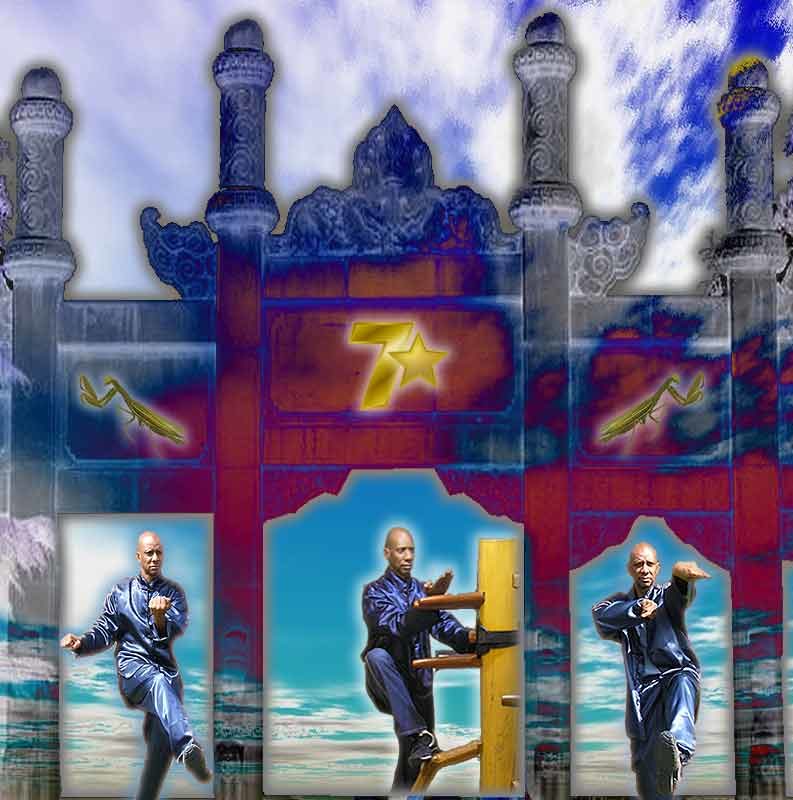Mook Yat Jong (Wooden Dummy)
The history of Wing Chun style also known as (Yong Chun), was developed 400 years ago by Jee Shim and Ng Muy, a female Buddhist nun. Although this story may be fictious what is true that there are various lineages of Wing Chun outside of Ip Man. Wing Chun is the style of street combat that is used in Hong Kong in the early 1950’s. The most recognized authority on Wing Chun in the 20th century was the late
Ip Man of Fashan. Wing Chun consists mostly of hand techniques with emphasis on strikes and parries that are executed at very close range. Although it requires neither a great deal of physical strength, nor an inordinate amount of agility, it is not for the weak at heart. Quick reflexes are indeed vital. In fact, a Wing Chun practitioner must be able to anticipate when a punch or a kick is coming elude it, punch or a kick is coming, elude it deflect it and hit, all in a single motion.
A special form of neuro-muscular training known as Qi Sao is used to bridge the gap in understanding between theory and application. During the course of Qi Sao training students become keenly aware of the role of centered body alignment, Forward energy (Chong Qi), sensitivity based upon touch, and economy OF motion.
Throughout the history of Wing Chun, a special form or kata called Sil Lum Tau is taught to all incoming students. It does not teach you how to fight, but gets the student used to the fact that she or he will be directing her or his energy in a direct, continuous flow. Sil Lim Tau form embodies most of the foundation principles one needs to master the basic stances, hand and elbow positions, linear/circular hand movements, centerline awareness. Students will also learn other forms such as Chum Kiu (Seeking Bridge), Biu Tze (Thrusting Fingers), Mook Yat Chong, Bart-Cham-Dao, and 6 1/2 Pole Technique in order to complete the system.
To Further understand Wing Chun,
Wing Chun Forms
The first and basic form is Sil Lum Tau
Students will also learn other forms such as Chum Kiu (Seeking Bridge), Biu Tze (Thrusting Fingers), Mook Yat Chong, Bart-Cham-Dao, and 6 1/2 Pole Technique in order to complete the system.
Everthing Wing Chun Instant Access is the best resource to get the video content you want to further your Wing Chun training. DVDs are becoming a thing of the past – digital delivery is the wave of the future. This is why you need to shop here.





